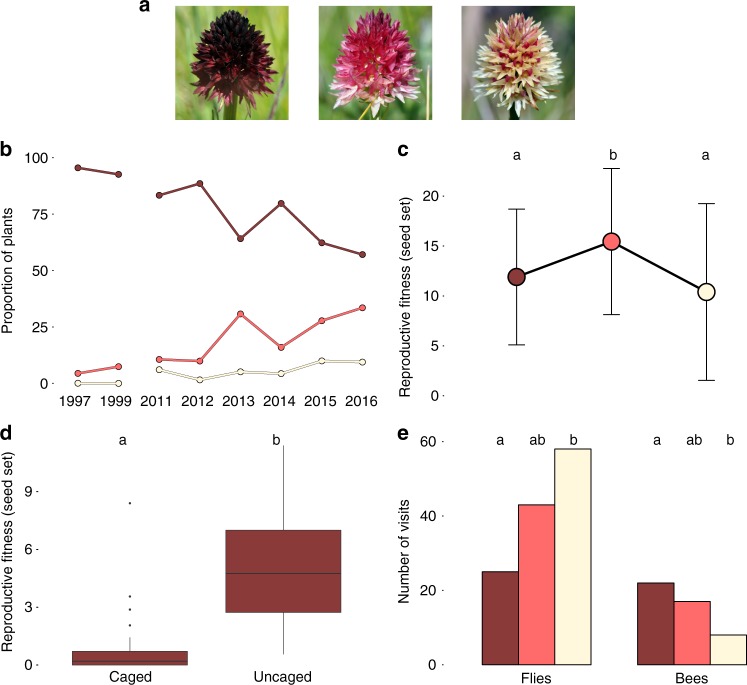Fig. 1.
Ecological evidence for overdominance in Gymnadenia rhellicani. a Three G. rhellicani floral colour morphs are growing intermixedly at Puflatsch. b The fraction of red and white morphs is increasing at Puflatsch, suggesting a fitness advantage of the white, red or both morphs. c Red, intermediate plants have the highest reproductive fitness (ANOVA (n = 173), F(4, 168) = 8.935, P = 1.446 × 10−6 and Tukey's HSD post hoc test tBlack-Red = 3.334, PBlack-Red = 0.003, tBlack-White = −1.168, PBlack-White = 0.467, tRed-White = −3.250, PRed-White = 0.004); bars denote ± 1 standard deviation). d Shielding plants (ungrazed Ofenpass site) from pollinators yielded low seed set, indicating pollinator-dependent reproduction (two-sided t test (n = 42), t(34.818) = −4.939, P = 1.955 × 10−5, the outlier value was caused by an accidentally trapped grasshopper leaving a hole in the net); centre lines denote medians, bounds of boxes denote first and third quartiles, whiskers denote 1.5× interquartile ranges. e Time-lapse recordings (2017), showing bee preference for dark and fly preference for bright plants, maximising seed set in the red morph (χ2 test, Supplementary Fig. 1)

